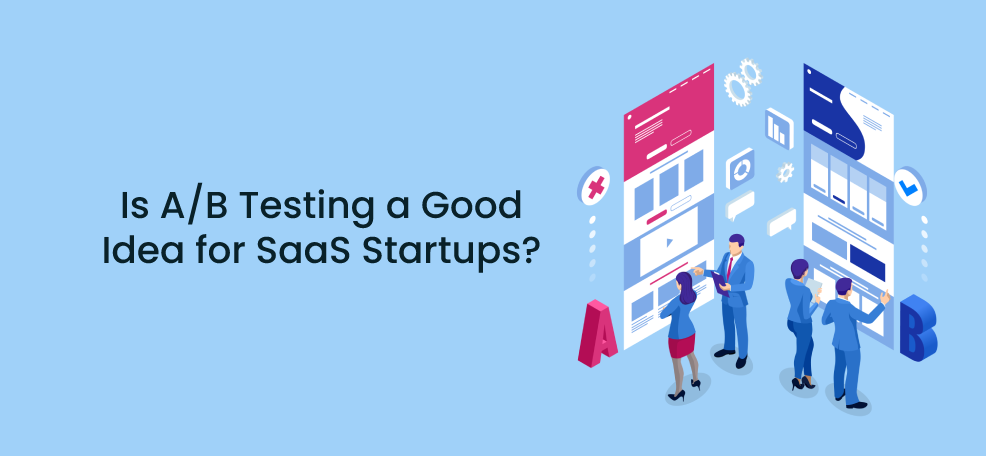The global software as a service (SaaS) industry in 2022 is rapidly growing at an average rate of 18% year-on-year with an estimated market value of $172 billion.
Thus, to survive and thrive, you need to have a solid approach and methodology for your product marketing campaigns. This means experimentation should be baked into your processes.
Trying simple yet effective testing methods, particularly A/B testing, would let you know if your campaigns are working—to compare which product features are more effective than the others or to find out if your messaging resonates or not.
As a caveat though, launching campaigns without having structured testing processes might result in a waste of money, time, and effort because of unintelligible hypotheses being tested.
That’s why before we deep dive into A/B testing for your SaaS business, it’s important that we establish the advantages and disadvantages of doing it first.
Weighing the pros and cons of A/B testing for SaaS startups
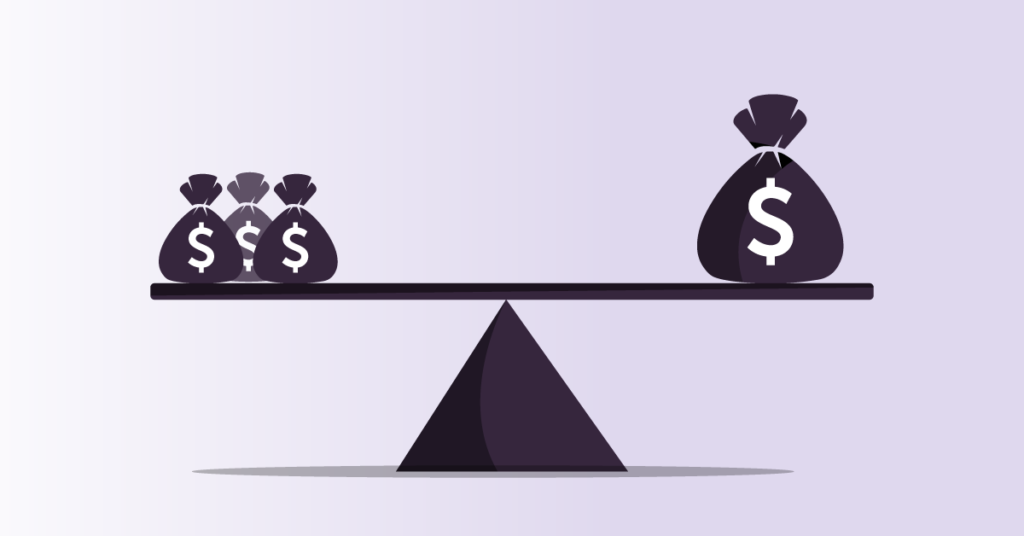
A/B testing can be a valuable tool for SaaS startups because it allows them to test new features or changes to their product before rolling them out to all users. This can help to ensure that the changes result in a positive impact on the business, such as increased revenue or higher customer satisfaction.
There are some drawbacks to A/B testing, however.
For example, it can be time-consuming and expensive to set up and run tests, and there is always the risk that the results may not be significant. As a startup, there’s the reality of not being able to generate huge amounts of user traffic for a product or service to come up with a conclusive recommendation.
Although, as a solution to this predicament, you can maximize SaaS lead generation through inbound marketing.
Overall, A/B testing can be a helpful tool for SaaS startups, but it is important to weigh the costs and benefits before deciding whether or not to use this method.
Benefits of conducting A/B tests
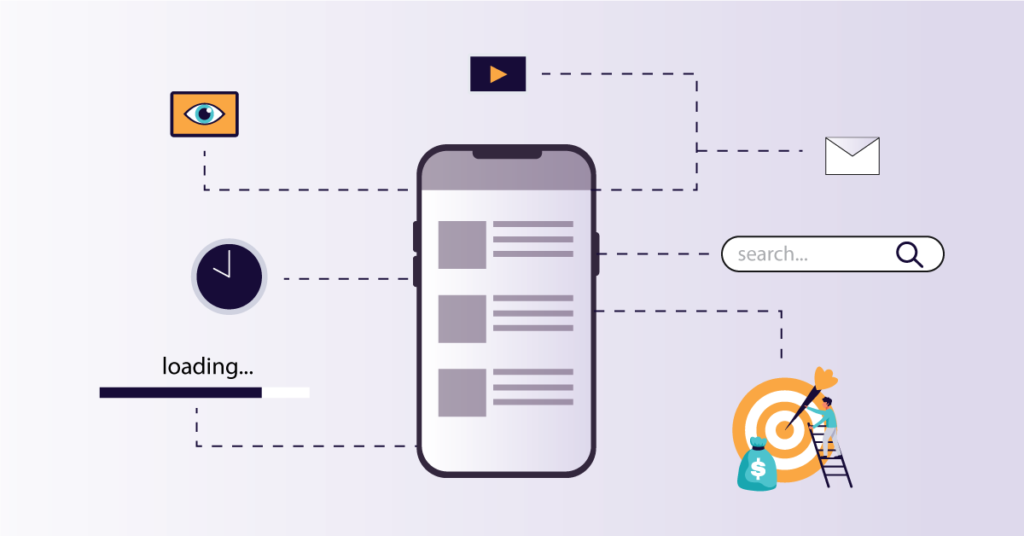
Your project management for SaaS is gonna get a massive, all-encompassing boost with A/B testing! Here’s how:
1. Cheaper development costs.
When A/B testing your SaaS projects, you’re cutting down on software development costs. After all, with A/B testing, each action taken, and by extension, money spent is calculated.
2. Satisfied customer needs.
With A/B testing, you’re making sure your software is accessible to your customers. Imagine if you have confusing chat button features. These would cost your new or even current customers time just trying to figure out how to navigate it on their own.
3. Better decision points.
Everyone agrees that they don’t want their efforts wasted. As such, A/B-tested software allows you to find and release the best possible version of it, removing the need for additional developmental trial-and-error.
4. Better customer insights.
Data from A/B tests and lead generation tools help you provide the best customer experience to your most valuable customers. It helps you optimize your software’s features based on various customer feedback.
5. Better product insights for development
As you gather more reliable data and customer feedback from your A/B tests, you’ll definitely come across product-related information that can help you in your product development and prioritization backlogs.
6. Profitable
Finally, with the A/B-tested software released, customers can get the best software experience you can give them. As they start enjoying your product, you become a trusted partner they’d enjoy doing business with more. So never skip out on doing A/B testing!
How can SaaS startups get started with A/B Testing

Now that you know the benefits it’s time to get started in taking the steps necessary to do A/B Testing.
1. Define your goals and metrics to measure success.
What do you want to achieve with A/B testing? These goals can range from increasing conversion rates, reducing churn, or improving your product design.
Once you’ve defined your goals then it’s time to determine what relevant metrics to track. Determine if key performance indicators like click-through rate (CTR) or bounce rates can signal if your goal is being achieved or not.
2. Develop an intelligent hypothesis for testing.
Any scientific testing starts with a clear hypothesis with solid data sources and is backed by good research. So before you go ahead with your A/B tests, write down what exactly needs to be tested and how it will prove or disprove your hypothesis.
It’s important to have a clear hypothesis of what you expect the results of the test to be. This will help you to design the test and interpret the results depending on your set goals.
3. Set up your control and test groups.
Next, you’ll need to create two versions of your product and release them to a control group (which will use the current version) and a test group (which will use the new version).
Make sure that you have a large enough sample size. A/B tests should be run on a representative sample of your target audience in order to get reliable results.
4. Establish conversion tracking to know the winner.
Once you’ve set up your groups, you’ll need to track conversions and analyze the results to see which version performed better.
Your analytics layer can help track conversion goal completions on the pages you’re testing to determine the winner. It’s also worth noting that an A/B test typically runs for four business cycles (7 days) for the results to be conclusive.
5. Prepare to iterate and improve your tests.
Your challenger might not always win on the first try but the results from that test run can be learning for you to improve on the next iteration.
It’s better to fail fast and don’t be afraid to try different versions of your product and see what works best for your users.
While A/B tests sound like a lot of work since it covers different areas of product marketing, there are ways you can make the workflow process efficient and effective.
A/B testing tips for SaaS startups
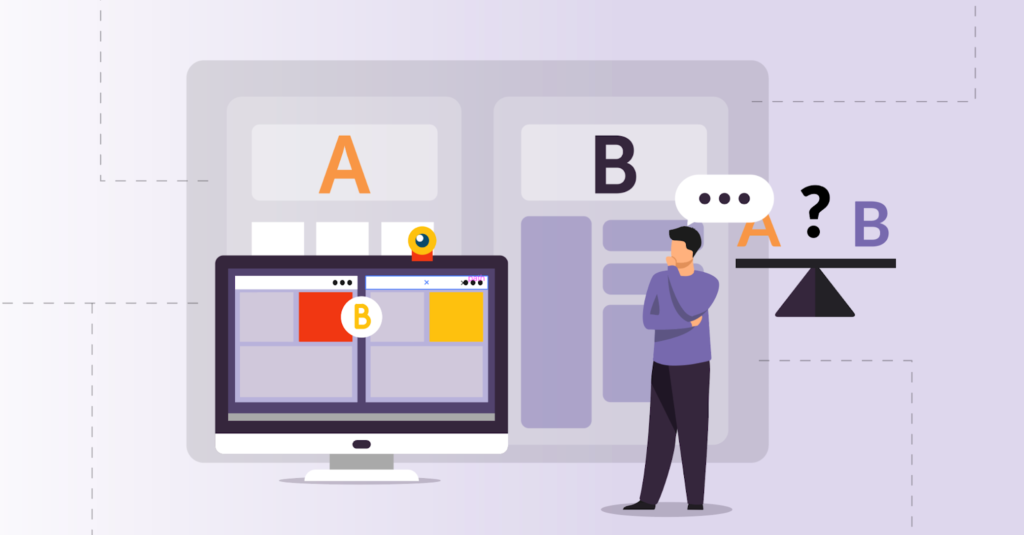
Here are a few tips you can incorporate into your product marketing strategies:
1. Only compare apples to apples.
It would be unreasonable to compare two different things during your A/B tests. You cannot change your headline when you have obviously tested for another content element in your ads.
For example: You can’t be testing a change in the headline to a change in the CTA. That only leads to flawed data and flawed analyses.
2. Invest in learning more than tools.
Tools are great to help you automate A/B tests. But you cannot always rely on them.
What if you wanted to test for specific features that your chosen tool does not cover to create your software? Or what if there comes a day when you’re on a tighter development budget?
In this sense, A/B testing tools should only be used as supplementary data resources. It still helps that you find out more strategies and actions to do A/B tests.
3. Pay attention to the KPIs that matter.
How much data is too much? Go back to your hypothesis or goals. Only focus on what you need to test. Do not be distracted by the amount of data that you might get from your A/B tests.
Always pay attention to the metrics that you need. Using less or too much data can lead to more flawed or useless analysis, so be very careful.
4. Set reasonable business cycles for your tests.
Don’t fall into analysis paralysis when you’re doing A/B testing. All your data may be put to waste or you overlook other aspects of the software if you take too long analyzing.
Conversely, if you release your software too quickly, you might not get enough data to make the right decisions.
5. Practice continuous experimentation program
A/B testing is a long, time-encompassing process that must be done regularly. This means you have to consistently accomplish A/B testing for not just your software, but also other essential components of your company such as marketing. In doing so, you ensure the entirety of your company is well-optimized.
Establishing a good experimentation program can lead you to success.
So, with all these benefits, processes, and tips said we conclude with the burning question…
Will A/B Testing Help Your SaaS Business Take-Off?
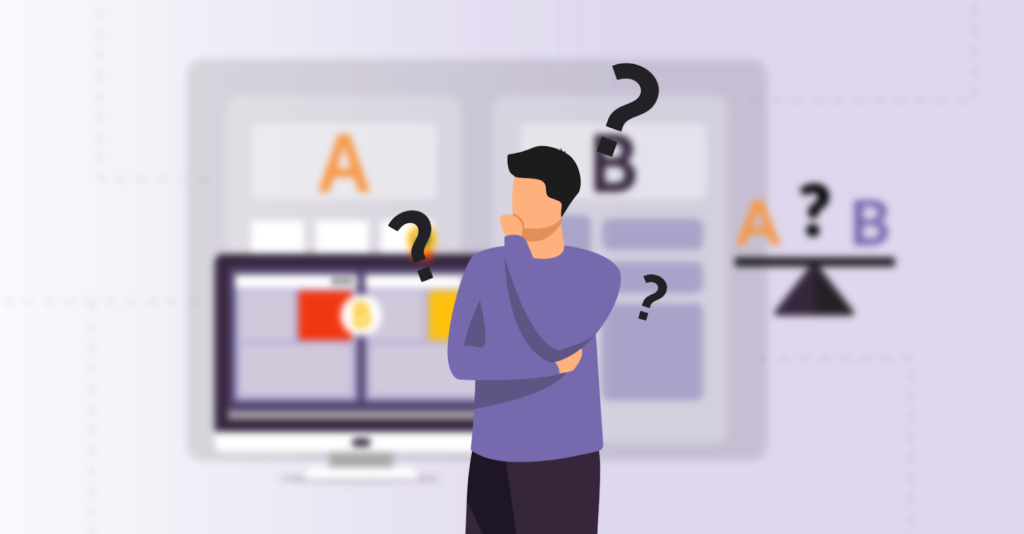
The answer to this question is a resounding YES!
As A/B testing guides the eventual release of your software, you’ll make the right decisions that boost the growth of your SaaS startup.
One of the best examples of A/B testing helping SaaS businesses take off is Teamleader, a SaaS brand from Belgium specializing in unified CRM, invoicing, and project planning platforms for SMEs.
Through rigorous A/B testing, Teamleader was able to increase their free trial sign-ups by 12.5%. These tests range from copy improvements, extensive layout updates, and form optimizations which led to a 9.3% increase in conversions.
With this in mind, start incorporating A/B testing as part of your product testing plan and watch as your business starts to take-off!
SaaS businesses thrive on innovations and innovation per-se is a function of how many tests you make in any given cycle. Accelerate your testing and you can speed up your SaaS innovation.
Pro-tip:
Use A/B Testing for business goals and not for the sake of science alone. While “95% significant difference” is academically set as the default to declare your winning version, it is not always the case when it comes to hitting your business goals.
Small incremental improvements (but not low-balled increases such as a 50-50 split result or slightly better than it) are wins that you should consider when running your tests.
Author’s Bio: Gary Viray is the founder and CEO of Propelrr, a data-informed digital marketing agency operating both in the United States and the Philippines.
